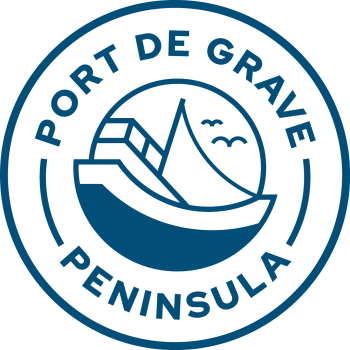Taken from Decks Awash
ISSN 0317-7076
Volume 15, Number 2
March· April 1986
Ship Cove may be the oldest settlement contained in the modern community of Port de Grave and could have been settled at the time referred to by the Portuguese
historian, Lorenzo Sabine. He reports families already trying to overwinter in Newfoundland as early as 1522. Lord Baltimore also records families living in Conception Bay in the late 15005. The first deed granted to George Daw of Ship Cove referred to land on which the flJ”Sl member of the Daw family overwintered in 1515 and
was settled since 1595. George Daw died in 1728 and his headstone was made in Torquay, suggesting continuing sponsorship by West Country merchants.
Some of the Daws may have joined John Guy at Cupids, but most local people believe that they encouraged him to settle further along Conception Bay to safeguard the family land and fishing rooms on the Port de Grave Peninsula. A merchant named Campbell also
claimed three plantations in ShipCove in the early 1700s, A cemetery dates back to the 1700s and the Pinsents were in Ship Cove in the late 1760s.
Darrel’s Hole is part of Ship Cove, which was settled by members of the Church of England. Rev. Charles Blackman was the first rector of St. Luke’s 1828-39 and he referred to the local cove as Dallon’s Hole, rather than Dan’el’s or Darrel’s Hole, two other versions in use at the time.
Another change in spelling also is attributed to a Church of England clergyman. The first spelling of the Daw family name as Dawe was of Emily Dawe in 1888, apparently under pressure from the local Church of England rector. Daw is the shortened form of “jackdaw”, a crow-like bird in Europe given to stealing jewelry and colored stones for nest decoration and than welcome synonym for the family name in its native West Country home.
The first church was completed in 1828. It was rebuilt and consecrated in 1878 and a third church was built on the same site in 1916. The first recorded baptism was
of Sarah Bussey in November 1827 and the first recorded death, that of John Daw from smallpox, was in 1828. Roy L. Dawe also tells a tale of a witch, Aunt Stacie, in Ship Cove. She lived in a mud hut in the early 1800s and put a hex on the local cows to prevent them from giving milk. It was believed the only way to exorcise the witchcraft was to give her an extreme fright at dawn, so four local men stationed themselves at the corners
of her hut and lifted off the roof as the sun appeared over the horizon. The shock must have done the trick because she was reputed to have lost her bewitching powers.
The 1857 census lists 367 residents, rising to 439 in 1869, but the community declined to as few as 282 residents by 1874. Henry Dawe owned three schooners at this time, the 17-ton Industry, 27-ton Thistle and 57-ton Mercury, all of which were still in use in 1918. An increase took place over the next decade with 319 residents in 1884 and 368 in 1891, largely as a result of activity in the Labrador and seal fisheries. In 1891 there were 74 fishermen and 71 fishermen-farmers.
Captain Eli Dawe (1843-1930) was a colorful local resident, sealing captain and politician. He represented the Harbour Grace district in the House from 1889 to 1909 after which he was director of a coal company at Coley’s Point and appointed to the Legislative Council in 1922.
Ship Cove was a centre of commercial, government, educational and religious activity equal to that of Port de Grave itself. AU of the 1911 population of 318 were listed as members of the Church of England, but 10 years later the first Pentecostal congregation was noted and a church and parsonage were constructed in 1925. The Pentecostal church had a congregation of 416 by 1945, the largest outside the strongholds on the northeast coast and in the Humber valley. The Pentecostal church also built a three-room school in the 1950s, which became a two-room school by 1968 when there were 42 K-8 pupils. This school closed when the new Pentecostal school was opened on Bareneed Hills in 1985. By 1945 there were also 152 United Church residents in the area.
The community had the greatest variety of occupations on the Peninsula in the 1911 census with 26 inshore and 26 Labrador fishermen, four miners, three laborers,
two carpenters, two clerks, a merchant, a teacher, a mechanic, a government employee and a bookkeeper among its heads of household. Fifty families were also
farming and 14 worked in the Bell Island mines.
In 1968 Ship Cove had eight fishermen, 14 laborers, 12 carpenters and engineers, four office clerks, three retail trade businessmen and one professional heading its families. The fishermen landed 1,150 quintals of cod from traps and 250 quintals in the fall fishery. Ship Cove remains a centre of fishing activity on the Port de Grave Peninsula, although it no longer rivals the larger settlement of Port de Grave.
Many of the older families still live in the community as they did when R.A. Parsons wrote his tribute in the 1950s:
Few have a fairer claim to fame as heirs Than they descendants of your pioneers Of Devonshire and Cornishmen who bore Names now so long familiar to your shore West Country names of Andrews- Tucker-Dawe!-
from Salute to Port de Grave by R.A. Parsons, published
in 1975, used with permission

